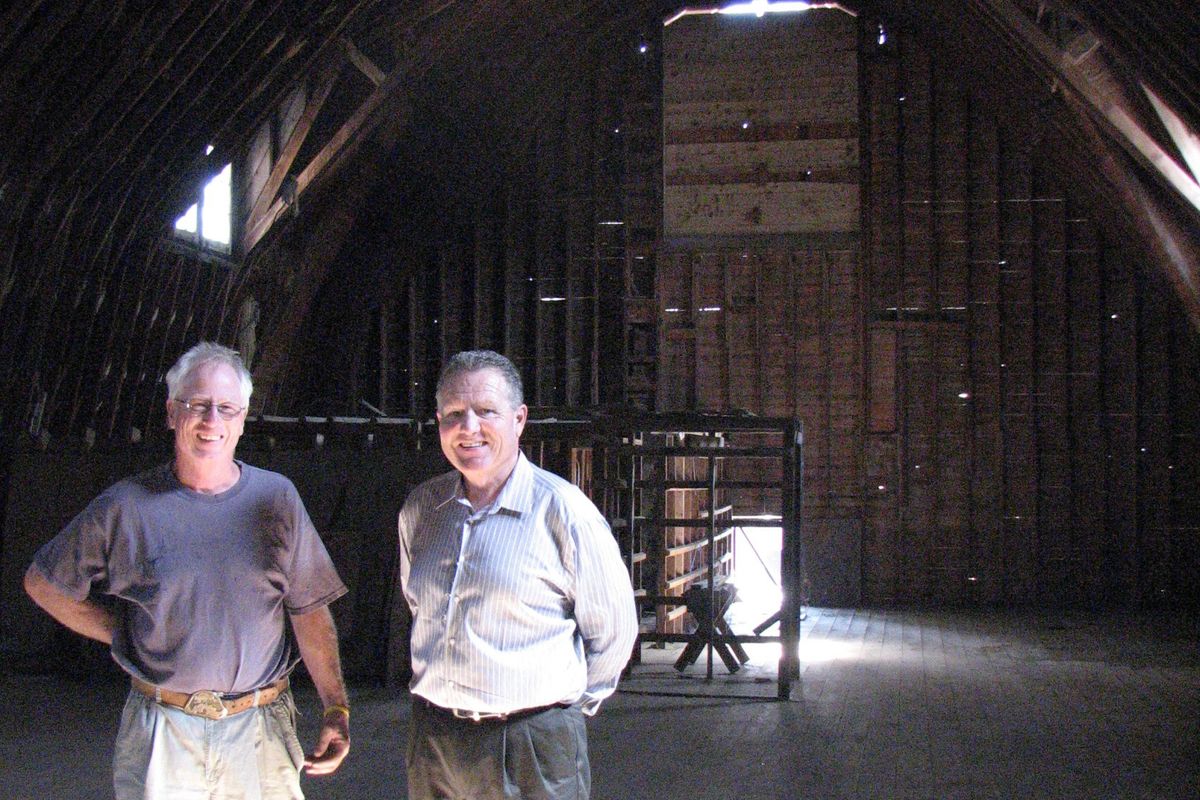Grant helps restore Hutton Settlement barn

When Hutton Settlement on Upriver Drive was built in 1919, it was built to be self-sufficient. The fields surrounding the settlement were farmed, and on the grounds were not only houses for children, but a huge dairy barn with cows and other livestock that provided food for the children’s home.
Today, the barn stands empty, a bit back on the property, waiting for a new purpose, but that doesn’t mean it’s not well taken care of.
Two years ago, the barn was approved for listing on the Washington State Heritage Barn Register, and shortly after that, the Hutton Settlement received a $35,000 grant from the Washington Trust for Historic Preservation to replace the barn’s roof and some damaged wood in the walls and around windows – keeping the barn in full operating condition.
“The grant made a huge difference to us,” said Mike Butler, administrator at the Hutton Settlement. “We could not afford to do all the work the barn needed without that grant.”
The hayloft shelters only a few bats, and the stalls, which housed a 4-H sheep program after the cows moved out, are empty as well.
“We are not really sure what we are going to use the barn for from now on,” said Butler. “I don’t think we’ll have animals here again, but we have a Christmas tree 4-H program – maybe we can find a use for the barn with that program.”
There are many barns like the one at Hutton scattered all over the state. Spokane County alone has 20 barns on the Heritage Barn Register, and now the state of Washington is getting ready to hand out another round of grants to help keep those barns standing.
Chris Moore, field director with the Washington Trust for Historic Preservation, gave a workshop about the grant program last week to about two dozen barn owners from Spokane and surrounding areas.
“This is the second round of grants from the state,” Moore said. “About $270,000 will be available to owners of designated Heritage Barns this time around.”
When the Hutton settlement received its barn grant, $450,000 was divvied out to Heritage Barns in need of a little – or a lot – of help to remain standing.
“We gave out 19 grants, and the average grant was just under $24,000,” Moore said, adding that competition was tough; the trust received 105 applications requesting more than $2.1 million.
“These are matching grants, dollar to dollar, so the barn owners must have their share of the funding ready,” said Moore. He explained that the lower amount this time around was because of state budget cuts.
“The need is still there, but everyone got cut, and we are happy that we still have some grant money to give out,” Moore said.
To be considered for a grant, a barn must first become a Designated Heritage Barn, It must be more than 50 years old and retain its historical integrity, and the more that’s known about the barn, the better.
“The barn’s condition should not be confused with its historic integrity,” said Moore, showing a picture of a barn that had almost collapsed yet still had beautiful windows and demonstrated old world craftsmanship.
“Remember, designation is honorary only,” Moore said. “It brings with it no regulations or restrictions on what you can do with your barn, or how you can use it.”
Why would the state support barn restoration?
“Historic barns constitute a public good, that’s why the state has this program,” Moore said. “And often agricultural buildings aren’t registered or documented. We know which old buildings we have in our cities – but not what we have on our farms, and our state has a rich agricultural history.”
The grant program has replaced a lot of roofs, Moore said, and there are some guidelines for the restoration work that grant recipients must follow to maintain the historic integrity of the barn.
Also, once a year, the barn must be open to the public.
“We’ll help you with that, but it’s important that people can see the barn,” Moore said. “In many cases barns become community icons and we find that even people who don’t own them care about what happens to them.”